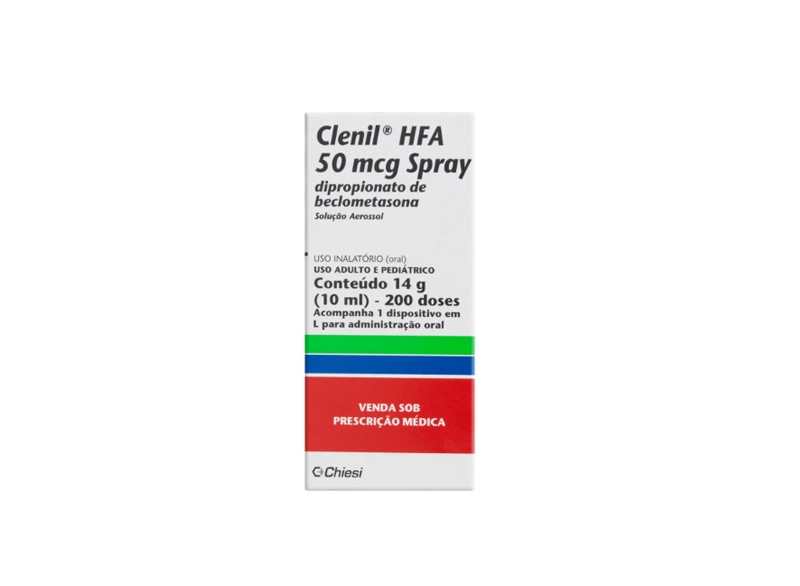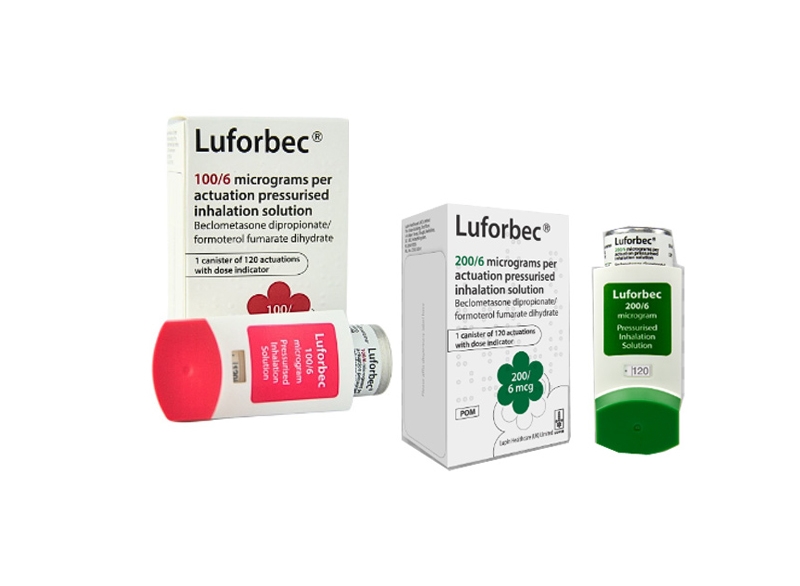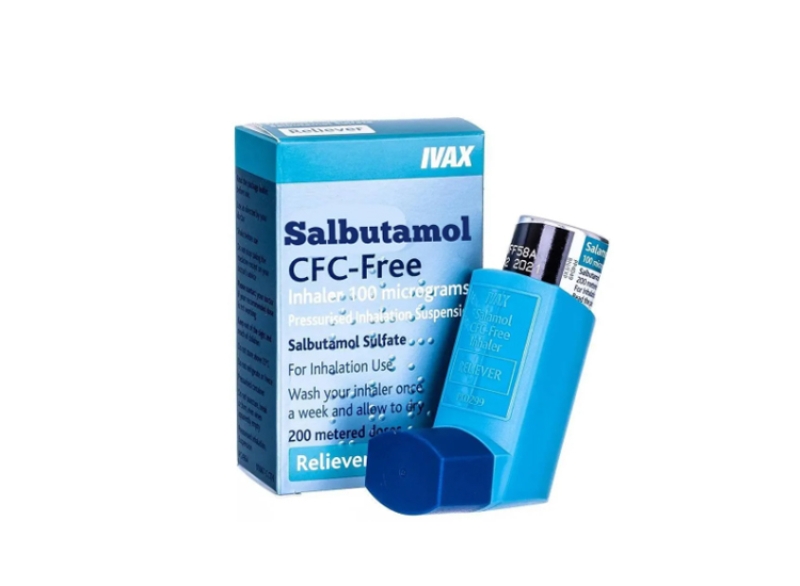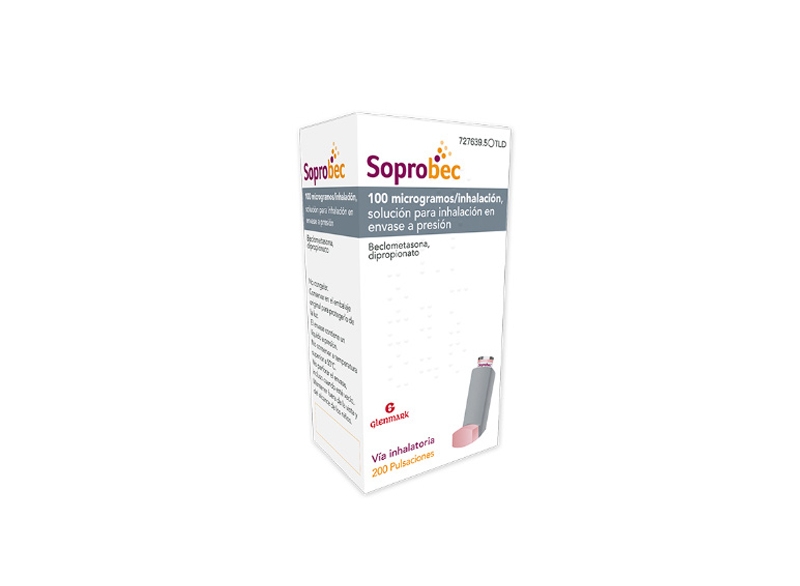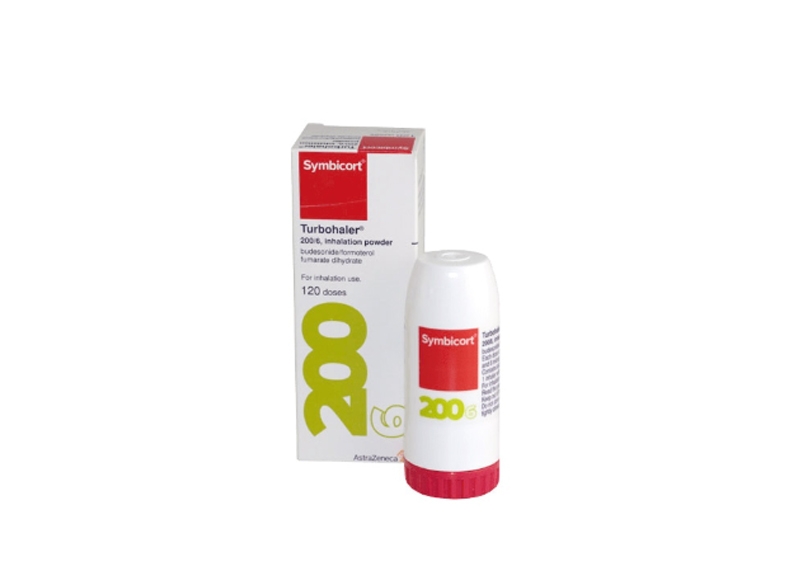How to Order ? Simple.
-

1.
Select Treatment
Choose from our treatment options or speak to the in-store pharmacist for advice
-

2.
Complete Medical Questionnaire
Complete our free online medical consultation to be reviewed by our Clinical Team
-

3.
Collect Medication from Local Pharmacy
We will notify you when your medication is ready for collection
Advice for Asthma
Asthma severity can range from mild to severe, with some individuals experiencing occasional symptoms while others may have frequent, debilitating episodes. Asthma attacks can occur, which are acute exacerbations of symptoms that may require urgent medical attention.
Management of asthma typically involves the use of two main categories of medications: quick-relief (or rescue) medications, which provide immediate relief during an asthma attack, and long-term control medications, which help prevent symptoms by reducing inflammation and airway hyperreactivity. The development of an asthma action plan, in collaboration with a healthcare provider, is essential for managing symptoms and knowing when to seek emergency care.
Additionally, environmental controls, such as using air purifiers, maintaining a clean living space, and avoiding smoking or tobacco exposure, can significantly reduce triggers. Education about the condition and awareness of personal triggers empower individuals to manage their asthma effectively. Advocacy for asthma awareness and support for research into new treatments are also vital components of improving asthma care worldwide.
Asthma symptoms can vary from person to person and may range in intensity. Here are the detailed symptoms associated with asthma:
1. Wheezing: A high-pitched whistling sound when breathing, particularly during exhalation, often indicative of narrowed airways.
2. Shortness of Breath: Experienced during physical activity or at rest, this symptom can vary in severity and may worsen at night.
3. Coughing: Persistent cough, often occurring at night or early in the morning. Coughing can be dry or may produce mucus, especially during an asthma attack.
4. Chest Tightness or Pain: A feeling of pressure or constriction in the chest, which can be uncomfortable and may feel similar to heartburn.
5. Difficulty Sleeping: Symptoms such as coughing, wheezing, or shortness of breath can interfere with sleep, leading to fatigue and daytime drowsiness.
6. Increased Mucus Production: Asthma can lead to excess production of mucus in the airways, which can further obstruct airflow and complicate breathing.
7. Fatigue: Ongoing breathing difficulties can lead to fatigue, as the body struggles for oxygen.
8. Rapid Breathing: During an asthma attack, individuals may exhibit fast, shallow breathing due to the struggle to get enough air.
9. Cyanosis: In severe cases, a bluish tint to the lips or face can occur, indicating insufficient oxygen in the bloodstream, necessitating immediate medical attention.
10. Symptoms Triggered by Specific Factors: Symptoms can be exacerbated by various triggers such as cold air, strenuous exercise, allergens (like pollen or dust), respiratory infections, strong odors, smoke, and stress.
Asthma symptoms can often be more pronounced at night or early in the morning, and it is important for individuals to recognize their personal triggers and patterns. Keeping track of symptoms and their frequency can be crucial in managing the condition effectively. Regular communication with a healthcare provider about symptom control and any changes is vital for effective asthma management.
Asthma is a chronic respiratory condition characterized by inflammation and narrowing of the airways. Several factors can contribute to its development and exacerbation, including:
1. Genetic Factors: A family history of asthma or other allergic conditions can increase the likelihood of developing asthma.
2. Environmental Allergens: Common allergens that may trigger asthma include pollen, dust mites, mold, pet dander, and cockroach droppings.
3. Air Pollution: Exposure to pollutants such as cigarette smoke, industrial emissions, and vehicle exhaust can worsen asthma symptoms.
4. Respiratory Infections: Viral infections, especially during early childhood, can trigger asthma or worsen existing conditions.
5. Exercise: Physical activity, especially in cold or dry air, can provoke asthma symptoms in some individuals.
6. Weather Conditions: Changes in weather, such as cold air or humidity, may trigger symptoms.
7. Strong Odors and Fumes: Exposure to strong scents, cleaning products, or other chemical fumes can trigger asthma attacks.
8. Stress and Emotion: Intense emotions and stress can lead to hyperventilation and worsen symptoms.
9. Medication: Certain medications, such as aspirin and non-steroidal anti-inflammatory drugs (NSAIDs), can trigger asthma symptoms in some individuals.
10. Gastroesophageal Reflux Disease (GERD): Reflux of stomach acid into the esophagus can worsen asthma symptoms.
Managing asthma typically involves identifying triggers, using medications as prescribed, and creating an asthma action plan with a healthcare provider. If you're experiencing asthma symptoms or need specific advice, consult a medical professional.
At Pharmacinta, we provide Inhalers that are a common and effective method for delivering asthma medications directly to the lungs. There are two primary types of inhalers used in asthma treatment:
1. Rescue inhalers, such as salbutamol, are vital for quick relief from asthma symptoms. Salbutamol is a short-acting beta-agonist (SABA) that works by relaxing the muscles around the airways, making it easier to breathe.
When inhaled, salbutamol acts rapidly, typically starting to work within minutes and lasting for several hours. It is commonly used during an asthma attack or when experiencing symptoms like wheezing, chest tightness, or shortness of breath.
Salbutamol is available in various forms, including metered-dose inhalers (MDIs), nebulizers, and oral tablets, with inhalers being the most prevalent method for quick relief. Dosage varies based on individual needs, and it’s important to follow the healthcare provider’s instructions regarding frequency of use.
While salbutamol is effective, common side effects may include tremors, rapid heartbeat, and nervousness, which usually diminish shortly after use. Dependence on rescue inhalers can signal inadequate asthma control, so it’s crucial to consult a healthcare provider if they are used frequently.
Overall, salbutamol plays a key role in asthma management by providing immediate symptom relief, allowing individuals to regain control during acute episodes. Regular check-ins with healthcare providers help ensure optimal asthma management and treatment adjustments.
2. Preventer inhalers, also known as maintenance inhalers, are essential for effectively managing asthma. They are used regularly to reduce airway inflammation and prevent asthma symptoms from occurring.
Common medications found in preventer inhalers include inhaled corticosteroids, like fluticasone and budesonide, which are the most effective for reducing inflammation. Long-acting beta-agonists (LABAs), such as salmeterol and formoterol, are often combined with inhaled corticosteroids to enhance control of asthma symptoms.
These inhalers work by keeping the airways open and reducing inflammation, leading to fewer symptoms and a lower risk of asthma attacks. It is important to use preventer inhalers daily as prescribed, even when symptoms are absent, as consistent use is crucial for long-term control.
Unlike rescue inhalers, preventer inhalers do not provide immediate relief of symptoms; instead, it may take several days to weeks of regular use to achieve the desired effect. Potential side effects can include throat irritation, hoarseness, and oral thrush, particularly with inhaled corticosteroids, making it advisable to rinse the mouth after use.
Regular follow-ups with a healthcare provider are important to monitor asthma control and adjust the treatment plan as needed. Overall, preventer inhalers are key to managing asthma by keeping inflammation in check and minimizing the frequency and severity of symptoms.
In addition to inhalers, there are several other treatments and strategies for managing asthma effectively. Here are some key options:
1. Oral Medications:
- Leukotriene Modifiers: Medications like montelukast help reduce inflammation and bronchoconstriction.
- Theophylline: An oral medication that helps relax the airways and improve breathing, though it’s less commonly used due to potential side effects and the need for monitoring blood levels.
2. Biologics:
- These are targeted therapies used for moderate to severe asthma that do not respond well to standard treatments. Examples include omalizumab, mepolizumab, and dupilumab, which target specific pathways in the immune response.
3. Allergy Treatments:
- For individuals with allergic asthma, allergen avoidance and treatments such as antihistamines or immunotherapy (allergy shots) can be beneficial in reducing triggers.
4. Lifestyle Modifications:
- Avoiding known triggers (like tobacco smoke, allergens, and pollution) is vital. Weight management, regular exercise, and good nutrition can also support respiratory health.
5. Monitoring and Action Plans:
- Keeping a daily record of symptoms and peak flow measurements can help detect worsening asthma early. An asthma action plan developed with a healthcare provider outlines steps to take during worsening symptoms.
6. Education and Self-Management:
- Education about asthma, its triggers, and proper medication use empowers patients to manage their condition effectively.
7. Pulmonary Rehabilitation:
- This program includes education, exercise training, and breathing techniques to improve overall lung function and quality of life.
8. Vaccinations:
- Staying up to date with vaccinations like the flu shot and pneumococcal vaccine can help prevent respiratory infections that may worsen asthma symptoms.
9. Alternative Therapies:
- Some individuals explore complementary treatments like yoga, acupuncture, or breathing exercises, although these should be discussed with a healthcare provider to ensure they’re safe and appropriate.
Consulting with a healthcare provider is essential to develop a personalized asthma management plan that may incorporate one or more of these treatments based on individual needs and asthma severity.
Frequently Asked Questions
Asthma can be categorized into several types based on its triggers. Allergic asthma is triggered by allergens such as pollen, mold spores, and pet dander. Non-allergic asthma, on the other hand, is triggered by irritants in the environment, including smoke and pollution. Exercise-induced bronchoconstriction describes symptoms that occur due to physical activity. Occupational asthma is a form caused by exposure to specific substances in the workplace, while cough-variant asthma is characterized primarily by a persistent cough without the typical wheezing or shortness of breath.
The diagnosis of asthma typically involves several steps. A healthcare provider will take a detailed medical history, which includes discussing symptoms, their frequency, and potential triggers. A physical examination is conducted to check for signs of asthma, such as wheezing. Lung function tests, particularly spirometry, are commonly employed to measure airflow and determine how effectively a person can exhale. Peak flow monitoring may also be used to track lung function over time, and additional allergy testing can help identify specific allergens contributing to asthma symptoms.
Effective asthma management involves developing a written asthma action plan in collaboration with a healthcare provider. This plan outlines medication use and instructions for managing worsening symptoms. Regular monitoring of symptoms and lung function using a peak flow meter is recommended. Identifying and avoiding known triggers is crucial for prevention, and ongoing communication with a healthcare provider allows for necessary adjustments to treatment.
Asthma triggers are substances or conditions that provoke or worsen asthma symptoms. Common triggers encompass allergens such as pollen, dust mites, mold, and pet dander. Environmental factors, including tobacco smoke, air pollution, and weather changes, play a significant role as well. Strong odors, fumes, or chemicals can irritate the airways, while respiratory infections and intense physical exertion may also trigger asthma flare-ups.
Immediate medical attention is necessary under certain circumstances. You should seek help if you experience severe shortness of breath or difficulty speaking in complete sentences. Rapid worsening of asthma symptoms that do not improve with rescue medication warrants a visit to the hospital, as does a significant drop in peak flow readings or signs of a severe asthma attack, such as blue lips or face, extreme anxiety, or confusion.
Currently, there is no cure for asthma. However, effective management through medications and lifestyle adjustments allows many individuals to control their symptoms and lead full, active lives.
Some children may experience a reduction in asthma symptoms as they age and may even outgrow the condition. However, asthma can persist into adulthood for others, and ongoing monitoring and reassessment of the condition are essential as children develop. It’s important to note that while some kids may improve, their underlying airway hyperreactivity might remain, potentially leading to asthma later in life.
Implementing certain lifestyle changes can significantly improve asthma management. Avoiding smoking and exposure to secondhand smoke is crucial for lung health. Maintaining a healthy weight is important since obesity can exacerbate asthma symptoms. Individuals should engage in regular exercise, as it can improve overall cardiovascular fitness and respiratory function. However, caution should be taken to manage symptoms appropriately before and during physical activity. A balanced diet rich in fruits, vegetables, and whole grains supports overall health and immune function. Additionally, managing stress through relaxation techniques, yoga, or meditation can be beneficial, as stress can trigger asthma symptoms. Individuals should identify and minimize exposure to allergens, and utilizing air filters, keeping the living space clean, and maintaining proper humidity levels can help in reducing asthma triggers at home.
During an asthma attack, it’s important to stay calm. Use your rescue inhaler or bronchodilator immediately as prescribed. Sitting upright can help facilitate easier breathing, and it is advisable to remain where you can easily access fresh air. If symptoms do not improve within 5 to 10 minutes after using your rescue inhaler, repeat the dose and seek emergency medical assistance. It's essential not to delay help if symptoms continue to worsen.
Preparation for seasonal allergies involves monitoring local pollen counts and staying indoors when counts are high. Using air conditioning with a HEPA filter can help keep outdoor allergens at bay. Keeping windows closed and using a dehumidifier can reduce indoor humidity, preventing mold growth. Regular cleaning to minimize dust and dander exposure is also crucial. Having medications readily available, including antihistamines for allergies and rescue inhalers for asthma, ensures that you are prepared for any increase in symptoms.
Nutrition can play a vital role in asthma management. A diet rich in antioxidants, vitamins (especially vitamin C and D), and omega-3 fatty acids has been shown to support overall respiratory health. Some research suggests that foods containing omega-3s, such as fish and flaxseeds, may have anti-inflammatory properties that can benefit individuals with asthma. Maintaining a healthy diet also helps in managing weight, which is particularly important since obesity can worsen asthma symptoms.
Yes, there is a notable connection between asthma and mental health. Anxiety and stress can exacerbate asthma symptoms, and individuals with asthma may face psychological challenges due to the limitations imposed by the disease. Conversely, chronic asthma can lead to increased anxiety or depression. It’s important for individuals managing asthma to also address mental health needs, seeking support through counseling or support groups if needed.
While asthma is a manageable condition, poorly controlled asthma may result in long-term issues. Chronic inflammation of the airways can lead to structural changes, increased airway responsiveness, and potentially permanent airway obstruction over time. Individuals with poorly controlled asthma may be at an increased risk of developing conditions such as chronic obstructive pulmonary disease (COPD). Frequent hospitalizations or emergency visits due to severe asthma attacks can also lead to a negative impact on quality of life.
Yes, asthma can be associated with several other health conditions. For example, individuals with asthma may also suffer from allergic rhinitis, which is characterized by nasal allergy symptoms. There is also a connection between asthma and gastroesophageal reflux disease (GERD); acid reflux can exacerbate asthma symptoms in some people, and managing reflux can help improve asthma control. Similarly, obesity has a strong association with asthma severity, as excess weight can impact lung function.
Exercise is generally beneficial for asthma patients, as it enhances lung function and overall cardiovascular health. However, some individuals may experience exercise-induced bronchoconstriction (EIB), where symptoms like wheezing and shortness of breath occur during or after physical exertion. Engaging in regular physical activity while being cautious about trigger management is essential. Proper warm-up exercises, monitoring air quality, and the use of pre-exercise medications prescribed by healthcare providers can help facilitate safe physical activity for those with asthma.
Inhalers generally fall into two main categories: metered-dose inhalers (MDIs) and dry powder inhalers (DPIs). MDIs use a pressurized canister to deliver a specific dose of medication when pressed, often requiring the user to coordinate inhalation with actuation. DPIs, on the other hand, release medication in a powder form and are activated by inhalation, requiring no coordination between pressing and inhaling. There are also nebulizers, which are devices that convert liquid medication into a mist for inhalation. Nebulizers deliver medication over a longer period and may be preferred for individuals unable to use traditional inhalers effectively.
To use an MDI effectively, follow these steps: Shake the inhaler well (if indicated), remove the cap, hold the inhaler upright, and exhale fully. Place the mouthpiece between your lips, and as you inhale deeply and slowly through your mouth, simultaneously press down on the canister to release the medication. Continue inhaling for about 3 to 5 seconds, then hold your breath for about 10 seconds before exhaling gently. If you are prescribed more than one puff, wait about one minute between puffs.
To use a DPI, first read the specific instructions for your device, as they may vary. Generally, you need to load the dose according to the inhaler’s design, remove the cap, and exhale fully. Place the mouthpiece in your mouth, create a seal with your lips, and inhale sharply and deeply to draw the medication into your lungs. Hold your breath for about 10 seconds after inhaling, then exhale gently. Do not exhale into the inhaler.
Inhalers may deliver various medications, including: ● Rescue inhalers: These are typically short-acting beta-agonists (SABAs) like albuterol that provide quick relief from acute asthma symptoms or attacks. ● Controller inhalers: These often contain inhaled corticosteroids (ICS) such as fluticasone or budesonide to reduce inflammation and prevent symptoms over the long term. Some combination inhalers include both a corticosteroid and a long-acting beta-agonist (LABA) for improved control.
If you forget to take a dose of your inhaler, take it as soon as you remember. However, if it’s almost time for your next dose, skip the missed dose and resume your normal schedule. Do not take double the dose to make up for a missed one. If you are using a rescue inhaler and need to use it frequently, consult your healthcare provider for guidance.
Many MDIs have dose counters to indicate how many doses are left. If your inhaler does not have a counter, it’s advisable to replace it after the prescribed number of doses is used. It’s also important to listen for a change in sound when you shake the inhaler and to check that it delivers the medication correctly.
Cleaning your inhaler is essential for maintaining proper function. For MDIs, you can rinse the mouthpiece with warm water and allow it to air dry once a week. Do not wash the canister. For DPIs, cleaning may vary by device, so always refer to the manufacturer's instructions. It’s important to regularly maintain your inhaler to prevent blockages and ensure proper medication delivery.
Possible side effects from inhaler medications may include throat irritation, coughing, or a bad taste in the mouth. Inhaled corticosteroids can lead to oral thrush (a fungal infection) if not rinsed properly after use. Prolonged use of certain medications may lead to systemic effects, particularly with high-dose inhaled corticosteroids. Always discuss potential side effects with your healthcare provider.
